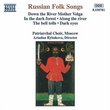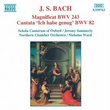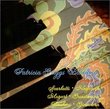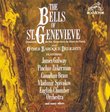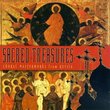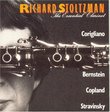| All Artists: Wolfgang Amadeus Mozart, Barry Wordsworth, Capella Istropolitana Title: Mozart: Symphonies Nos. 40 & 41 "Jupiter" Members Wishing: 0 Total Copies: 0 Label: Naxos Release Date: 6/30/1992 Genre: Classical Styles: Historical Periods, Classical (c.1770-1830), Symphonies Number of Discs: 1 SwapaCD Credits: 1 UPC: 730099529921 |
Search - Wolfgang Amadeus Mozart, Barry Wordsworth, Capella Istropolitana :: Mozart: Symphonies Nos. 40 & 41 "Jupiter"
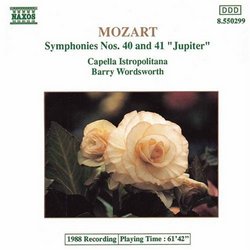 | Wolfgang Amadeus Mozart, Barry Wordsworth, Capella Istropolitana Mozart: Symphonies Nos. 40 & 41 "Jupiter" Genre: Classical
Format: 8 tracks, Audio CDRun Time: 62 minutesPublisher: NAXOS of AmericaISBN: 0-730099529921 |
Larger Image |
CD DetailsSynopsis
Product Description Format: 8 tracks, Audio CDRun Time: 62 minutesPublisher: NAXOS of AmericaISBN: 0-730099529921 Similar CDsSimilarly Requested CDs
|
CD ReviewsSymphonies of Beauty and Learning Robin Friedman | Washington, D.C. United States | 05/31/2007 (5 out of 5 stars) "I have a fond place in my heart for budget-priced recordings. Many years ago, I got my first exposure to music on labels such as Vox, Vanguard, Turnabout, Nonesuch,and several others. In recent years, Naxos has been recording both familiar and the unfamiliar masterpieces across a broad realm of music. The recordings by Capella Istropolitana, conducted by Barry Wordsworth of Mozart symphonies are among the earliest and best recordings in the Naxos catalogue. These recordings date from the late 1980s. The Capella Istropolitana is a chamber ensemble, originally formed for recordings. It has become over the years an important orchestra and performs live in Bratislava and in Eastern Europe. Barry Wordsworth has had a distinguished career as conductor for the Royal Ballet, the BBC Concert, and other ensembles.
This CD includes Mozart's final two symphonies, no 40 in G minor, K 550, and the "Jupiter" symphony, no. 41 in C major, K. 551. There are many recordings of these two great works, including competition from budget-priced CDs. This recording is an excellent choice, particularly for young listeners of for those listeners just beginning to explore the world of music -- as I did long ago. The symphonies are played with verve and enthusiasm by a small orchestra using modern instruments. Although modern instruments are used, I found the performances historically idiomatic in character, especially in their somewhat detached style -- as opposed to the modern tendency to play legato throughout -- in many places. There is an excellent balance between the winds and the strings. This is a solid, acclaimed performance of Mozart which will allow the new listener to focus on the music. I also recommend a companion recording which includes Mozart's symphonies 34, 35, and 39. Mozart's composed his final three symphonies in approximately six weeks during the summer of 1788. The reasons for their composition remain unclear. The famous critic, Sir Donald Francis Tovey, described the three symphonies as "expressing the healthiest reactions on each other -- the E-flat symphony has always been known as the locus classicus for euphony: the G Minor accurately defines the range of passion comprehended in the terms of Mozart's art; and the C Major (Jupiter) ends his symphonic career with the youthful majesty of a Greek god." These symphonies, the two included here, and the 39th as well, remarkable for their combination of power and mastery with grace and lyricism. They also fuse the galant, melodic style of early clasicism with the most sophisticated learning and counterpoint. These symphonies are essential for anyone who wants to experience music. Mozart's G minor symphony, K. 550, is a work for reduced orchestra in a style that is both heroic and passionate. The work, and this performance, moves between austurity and tragedy on the one hand and outbursts of romantic passion on the other hand. The first, third, and final movements are all in the minor key and are performed here with a great deal of angularity. The second movement with its quietly pulsating theme offers a moment of respite from the other movements of this work. The tone of the symphony is set in the opening bars with the tragic undertones provided for the violas. Listen to the way Mozart combines melodic with fugual elements in, for example, the development of the first movement, the main theme of the minuet, and througout the finale. The theme of the finale is based upon a rising note pattern played in a crescendo in a phrase that became known as the "Mannheim Rocket." On the whole, I found Wordsworth's reading emphasized the austure elements of Mozart's score more than the moments of passion. Mozart's final symphony the "Jupiter" in C major is also one of the masterworks of symphonic literature. It combines disparate elements of power, lyricism, and gaiety into an integrated whole. Thus, the first movement includes three themes, the first powerful, the second lyrical, the third light into a unity. The slow movement is tender in character and the lovely minuet is flowing. But the highlight of this symphony is the finale in which Mozart combines galantrie and sonata form with astounding counterpoint. The movement begins with a rocking theme which returns several times, each with additional voices. It reaches a climactic moment near the end in which the theme is given out in five voices. The movement is astounding, not for its technical mastery, but for the power, ease, and simplicity with which Mozart combines two seemingly disparate styles of music. As Eric Blom wrote: "there is a mystery in this music not to be solved by analysis or criticism, and perhaps only just to be apprehended by the imagination." Wordsworth and the Capella Istropolitana give a sharply-etched, balanced performance of this symphony which will serve as an excellent introduction to this great music. This CD, and the companion recording of symphonies 34, 35 (the "Haffner" symphony) and 39, are excellent introductions to Mozart at any price. The quotations above from Tovey and Blom are drawn from Martin Bookspan's still valuable survey, "101 Masterpieces of Music and their Composers." Robin Friedman " |

 Track Listings (8) - Disc #1
Track Listings (8) - Disc #1